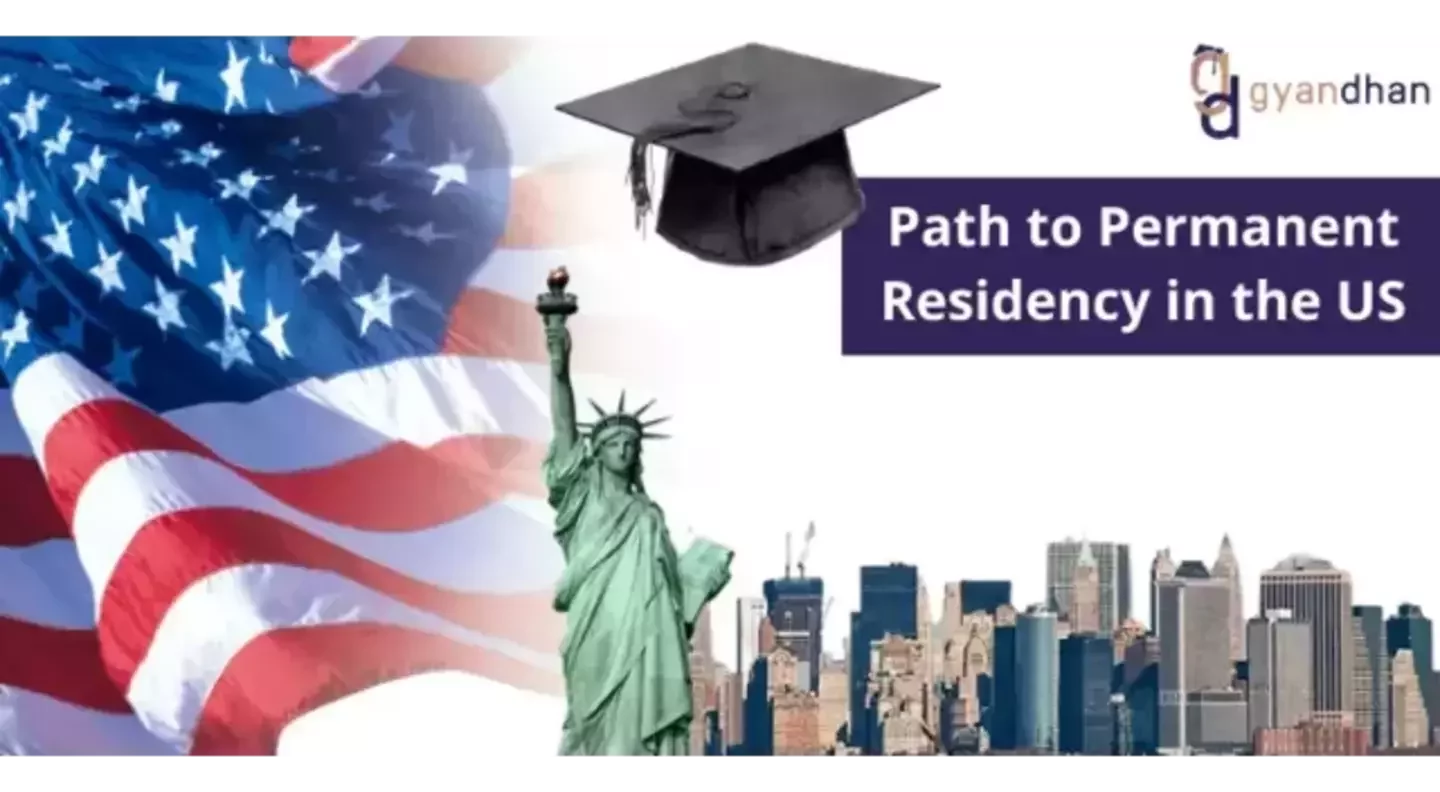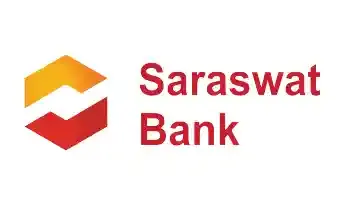Get instant loan offer suitable to your profile !


On this Page:
Explore paths to American Permanent Residency, including family, employment, and investment options for a secure future in the USA. Get your US PR now!
Are you among the ones who dream about settling in the United States of America? Today, there are myriad reasons why millions of Indian students aspire to settle in the United States; commonly abbreviated as the US. The level of prosperity, freedom, transparency, infrastructure, and medical care present in the US are among the incentives that lure them. And if you too are determined to settle there, we at GyanDhan are providing you with a comprehensive guide that will cover everything that you need to know to get a permanent resident card USA.

American permanent residency grants a non-citizen the right to live and work in the United States indefinitely. This status is symbolized by the issuance of the USA green card, a card that not only signifies the holder's status but also serves as a vital piece of identification. As a United States of America permanent resident, an individual enjoys many of the rights and privileges of U.S. citizens, such as access to employment and protection under U.S. laws, although they do not have the right to vote in federal elections and can be subject to deportation under certain conditions. Obtaining this status involves a rigorous application process, which can vary depending on the individual's circumstances, such as family ties in the U.S., employment opportunities, or other special qualifications.

For international students in the United States, transitioning from a student visa (F-1 visa) to a green card in USA represents a significant step towards long-term residency and integration. Here’s how you can align your student status towards obtaining a "green card America" a.k.a USA PR eligibility:
 Adjustment of Status: After graduation, you can transition to a work visa (like H-1B visa) and then apply for a green card through employer sponsorship.
Adjustment of Status: After graduation, you can transition to a work visa (like H-1B visa) and then apply for a green card through employer sponsorship.
 Marriage to a U.S. Citizen: If you marry a U.S. citizen, you can apply for a green card through your spouse.
Marriage to a U.S. Citizen: If you marry a U.S. citizen, you can apply for a green card through your spouse.
 Investment: Investing a substantial amount in a U.S. business can qualify you for an investor-based green card.
Investment: Investing a substantial amount in a U.S. business can qualify you for an investor-based green card.
 Special Categories: Some students might qualify under special categories like asylum or refugee status if applicable.
Special Categories: Some students might qualify under special categories like asylum or refugee status if applicable.
 Diversity Visa Lottery: Annually, the U.S. conducts a lottery where citizens from eligible countries can apply to receive a green card.
Diversity Visa Lottery: Annually, the U.S. conducts a lottery where citizens from eligible countries can apply to receive a green card.
To answer “how can I get citizenship of USA?" holding a green card for five years is a prerequisite before you can apply for U.S. citizenship through naturalization.

Navigating the path to obtaining permanent residency in the USA involves compiling a substantial list of documents to meet the American green card requirements. Here are the essential documents you need to gather:
 Passport
Passport
 Birth Certificate
Birth Certificate
 Proof of Legal Entry and Status (including visa and I-94 form)
Proof of Legal Entry and Status (including visa and I-94 form)
 Sponsorship Documents
Sponsorship Documents
 Financial Documents
Financial Documents
 Medical Examination Results
Medical Examination Results
 Police Clearance Certificate
Police Clearance Certificate
 Marriage or Divorce Certificates
Marriage or Divorce Certificates
 Passport-style Photos
Passport-style Photos
Read more about: Everything You Need To Know About Northeastern’s Co-op Program

Here are the different ways in which you can get PR USA -
 Family-Based Immigration: This pathway allows U.S. citizens and permanent residents to sponsor close family members for a green card. For U.S. citizens, the eligible relatives include spouses, children (unmarried and under 21), parents (if the sponsor is over 21), and siblings. Permanent residents can sponsor their spouses and unmarried children. This is a popular route to achieving PR USA status due to its direct connection to family reunification policies.
Family-Based Immigration: This pathway allows U.S. citizens and permanent residents to sponsor close family members for a green card. For U.S. citizens, the eligible relatives include spouses, children (unmarried and under 21), parents (if the sponsor is over 21), and siblings. Permanent residents can sponsor their spouses and unmarried children. This is a popular route to achieving PR USA status due to its direct connection to family reunification policies.
 Employment-Based Immigration: The U.S. offers various categories of employment-based visas, each catering to different types of skills and occupations. These include priority workers (such as multinational managers, outstanding academics, and researchers), professionals with advanced degrees, skilled workers, and special immigrants (like religious workers). Employers must often prove that they were unable to fill their vacancies with U.S. workers before sponsoring a foreign worker, thereby making this pathway competitive and highly sought after.
Employment-Based Immigration: The U.S. offers various categories of employment-based visas, each catering to different types of skills and occupations. These include priority workers (such as multinational managers, outstanding academics, and researchers), professionals with advanced degrees, skilled workers, and special immigrants (like religious workers). Employers must often prove that they were unable to fill their vacancies with U.S. workers before sponsoring a foreign worker, thereby making this pathway competitive and highly sought after.
 Refugee or Asylee Status: This humanitarian pathway provides protection for individuals who have fled their home countries due to threats of persecution based on race, religion, nationality, political opinion, or membership in a particular social group. Once granted refugee or asylee status, individuals may apply for a green card one year after their admission or approval, marking a significant step toward becoming a permanent resident of the United States.
Refugee or Asylee Status: This humanitarian pathway provides protection for individuals who have fled their home countries due to threats of persecution based on race, religion, nationality, political opinion, or membership in a particular social group. Once granted refugee or asylee status, individuals may apply for a green card one year after their admission or approval, marking a significant step toward becoming a permanent resident of the United States.
 Diversity Lottery: Designed to diversify the immigrant population in the United States, the Diversity Visa Lottery program selects applicants mostly from countries with low rates of immigration to the U.S. If selected, applicants must meet strict eligibility checks, which include education and work experience requirements. This lottery is a rare but valuable opportunity for many hoping to receive a US PR Card.
Diversity Lottery: Designed to diversify the immigrant population in the United States, the Diversity Visa Lottery program selects applicants mostly from countries with low rates of immigration to the U.S. If selected, applicants must meet strict eligibility checks, which include education and work experience requirements. This lottery is a rare but valuable opportunity for many hoping to receive a US PR Card.
 Investment (EB-5 Visa): Targeted at affluent investors, this route requires a substantial financial investment into a U.S. commercial enterprise. The investment must lead to the creation of at least 10 full-time jobs for U.S. workers. Initially, investors receive conditional residency, which can be converted to permanent residency after two years, provided the investment has met its job-creation requirements. Investing in the U.S. economy and creating jobs can grant you conditional and then permanent residency, ultimately offering a pathway to how to obtain citizenship in America.
Investment (EB-5 Visa): Targeted at affluent investors, this route requires a substantial financial investment into a U.S. commercial enterprise. The investment must lead to the creation of at least 10 full-time jobs for U.S. workers. Initially, investors receive conditional residency, which can be converted to permanent residency after two years, provided the investment has met its job-creation requirements. Investing in the U.S. economy and creating jobs can grant you conditional and then permanent residency, ultimately offering a pathway to how to obtain citizenship in America.
 Special Categories of Jobs: Several niche categories also allow for green card eligibility. These include jobs like Afghan/Iraqi translator for the U.S. military, employees of international broadcasting companies, and workers of certain international organizations, among others. These specific roles often have different requirements and application processes compared to mainstream employment visas.
Special Categories of Jobs: Several niche categories also allow for green card eligibility. These include jobs like Afghan/Iraqi translator for the U.S. military, employees of international broadcasting companies, and workers of certain international organizations, among others. These specific roles often have different requirements and application processes compared to mainstream employment visas.

Deciding whether it's worth getting permanent residency in the USA largely depends on individual goals and circumstances. Permanent residency offers substantial benefits like long-term job opportunities, access to a stable and diverse educational system, and eligibility for certain federal benefits. It also provides a pathway to U.S. citizenship, which comes with the right to vote and easier international travel. However, the process can be lengthy and complex, requiring significant commitment and sometimes substantial financial investment. For those seeking new opportunities in a country with diverse possibilities, obtaining permanent residency can indeed be very worthwhile.
Navigating the pathways to American Permanent Residency can open doors to a world of opportunities in the United States. Whether it's through family ties, employment, or investment, each route offers a promising step toward a prosperous future. If you're considering furthering your education in the US and are curious about how a higher education loan might lead to permanent residency later, why not start now? check your eligibility for a loan with GyanDhan and take your first step towards achieving your American dream.
Also Read:

If you are outside the United States, you need to apply for an immigrant visa through consular processing at a U.S. embassy or consulate in your home country. This is the first step before you can obtain a Green Card.
You can become eligible for a Green Card through various paths including family sponsorship, employment, refugee or asylee status, and other special provisions. Each category has specific criteria that applicants must meet.
If you are already in the U.S., you might qualify for an adjustment of status. This involves filing Form I-485 with USCIS. This is applicable if you have been inspected and admitted or paroled into the U.S., among other requirements.
Green Card holders are required to obey all U.S. laws, file U.S. tax returns, and support the U.S. government. Males between ages 18 and 25 must register with the Selective Service. Green Card holders should also carry their card at all times.
To apply for U.S. citizenship through naturalization, you must meet several requirements including being at least 18 years old, having lived in the U.S. as a Green Card holder for at least five years (or three years if married to a U.S. citizen), and having continuous residence and physical presence in the U.S.
Check Your Education Loan Eligibility

Ask from a community of 10K+ peers, alumni and experts
Trending Blogs
Similar Blogs

Network with a community of curious students, just like you
Join our community to make connections, find answers and future roommates.. Join our CommunityCountry-Wise Loans
Best Lenders for Education Loan

ICICI Bank

Axis Bank

Union Bank

Prodigy

Auxilo

Credila

IDFC

InCred

MPower

Avanse

SBI

BOB

Poonawalla

Saraswat